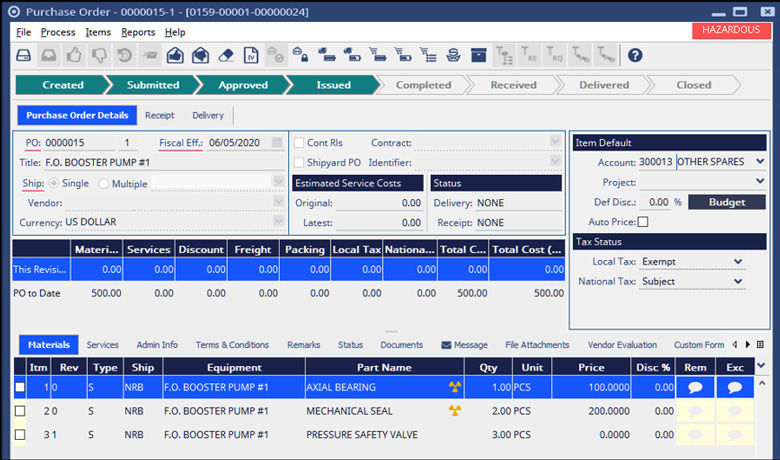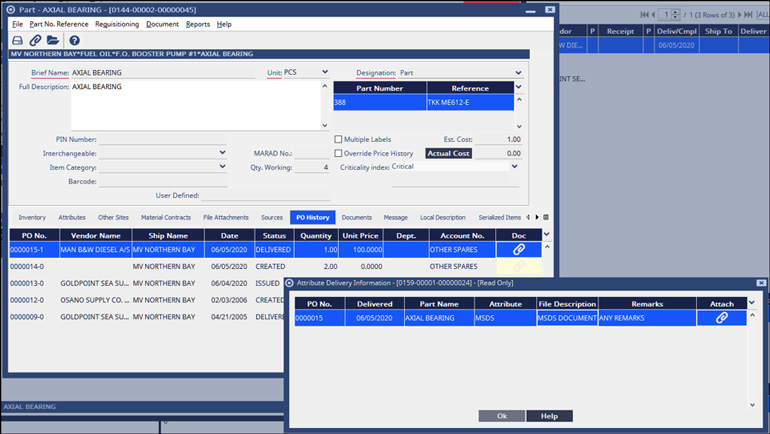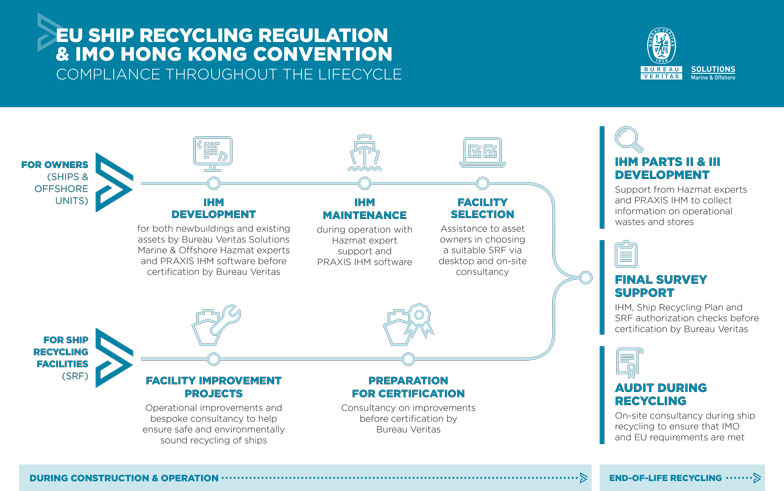DNV GL has issued a timely reminder to shipowners over the looming deadline for compliance with the Inventory of Hazardous Materials (IHM) regulation. The document is titled EU Ship Recycling Regulation – Further Clarifications on IHM and pertains to the EU deadline of 31 December 2020. The EU Ship Recycling Regulation (EU SRR) applies to tankers flying the flag of an EU country, plus Norway and Iceland. A tanker flagged with any of these states must have, by the deadline, an IHM part 1 report onboard, maintained by a qualified person onboard or ashore.
The IHM part 1 is a live document and the designated qualified person is responsible for maintaining and updating it. The IHM part 1 is based on a survey of the vessel by a third party or a qualified person that has identified and listed the location of hazardous materials (ref. MEPC.269(68), Appendix 3, Chapter 3.2). Clearly, this is a significant undertaking and DNV GL and other class societies are qualified to undertake the survey. DNV GL also offers courses to train shore-based or sea-going staff to the required qualification.
The qualified designated person is required to add to the IHM part 1 the details of any additions to the tanker, such as any new equipment. This includes coatings. The designated person is required to obtain the Material Declaration (MD) or Supplier’s Declaration of Conformity (SDoC) forms and ensure these are properly filled out. Furthermore, the forms are required even if no hazardous materials have come onboard. Tracking and maintaining IHM part 1 is a significant task and DNV GL has produced a smart software solution, IHM Green Server, which is not limited to DNV GL-classed vessels.
While there is no annual check on the IHM part 1, it is checked as part of the five-years renewal survey. It is also a document that could be checked as part of an inspection by Port State Control (PSC). Failure to produce an up-to-date IHM part 1 could provoke a detailed inspection or even detention.
The presence of IHM part 1 contributes towards the recycling of the vessel in conformity with the EU SRR. Should an EU-, Norwegian- or Icelandic-flag vessel be sent for recycling, the owner must obtain a Ready for Recycling certificate and the vessel be sent to facilities listed in the European List. The IHM part 1 is supplemented by Part II for operationally-generated waste and Part III for stores. At the EU-listed ship recycling facility, there is a final survey to verify IHM and prepare a Ship Recycling Plan (SRP). The first large vessel to undergo the process was the Norwegian-flagged Grieg Star AS vessel Star Gran, which was recycled at an approved EU-listed yard in Turkey.
The EU Waste Shipment Regulation will apply to a non-EU/EEA-flagged vessel sailing from a European port; if the vessel sails from a non-European port, the regulation will still be applicable.
Source: rivieramm









